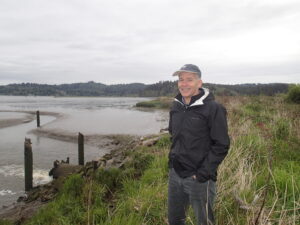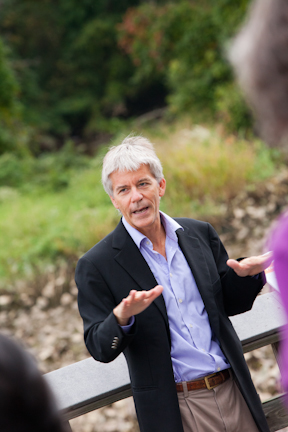
Keith Bowers, lower Columbia River Estuary
I was recently asked this question by a reporter. You’d think that as the founder of a firm that helped pioneer the practice 35 years ago, I’d be used to a question like this. The truth is, I’m not.
Given my daily interactions with the ecologically-oriented scientists and designers at Biohabitats, our forward-thinking clients, and the many allied firms with whom we partner to restore degraded ecosystems and enhance biodiversity and sustainability, it’s easy for me to forget that not everyone shares our perspective on the importance of ecological restoration.
That reporter’s question stopped me in my tracks. It was a blunt reminder of the importance of communicating not only WHAT we do and HOW we do it, but WHY.
So I thought I’d share my answer to that reporter’s question and a reminder to never stop talking about WHY we do what we do.
 Human actions are depleting Earth’s natural capital, putting such strain on the environment that the ability of the planet’s ecosystems to sustain future generations can no longer be taken for granted,” warns the Millennium Ecosystem Assessment, a four-year study sponsored by the United Nations.
Human actions are depleting Earth’s natural capital, putting such strain on the environment that the ability of the planet’s ecosystems to sustain future generations can no longer be taken for granted,” warns the Millennium Ecosystem Assessment, a four-year study sponsored by the United Nations.
Over 1,300 scientists and researchers from more than 95 countries collaborated to assess 24 of the Earth’s primary ecosystems that support human survival. Their findings are both surprising and staggering. They concluded that the ongoing degradation of 15 of the 24 ecosystems is substantial, with serious adverse effects on their capacity to support future human needs. Future threats include the emergence of new diseases, sudden changes in water quality, creation of “dead zones” in ocean shelf areas along coasts, the collapse of fisheries, climate change, and more.
If there ever was an environmental movement that articulates a vision of the future commensurate with the magnitude of the crisis, requires radical changes in the way nature is treated at every level of decision-making, and is poised to lead the environmental movement in a renewed spirit of a positive future, it is ecological restoration.
Ecological restoration’s vision is that of a better tomorrow, where ecological processes, functions and attributes are restored. It is a better, more promising future. While conservation plays a critical role in protecting the past, ecological restoration restores the future.
Ecological restoration can involve technological solutions, but it is sustained and nurtured by people. Restoration is not a passive act, but an active choice, one that requires people to interact with the earth and all of its life and splendor. Ecological restoration is about restoring people’s sense of place, awe, and worth – through direct participation.
Through ecological restoration other pressing environmental and social causes can be addressed, including equity, security and prosperity.
Further Reading
Meet Assistant Construction Project Team Leader Bryan SullivanMeet Conservation Biologist Nolan Schillerstrom
Get to know Allyson Gibson, Biohabitats Extern
Get to Know Graphic Designer Joey Marshall
Evolution: A New Leadership Team for Biohabitats
More From This Author
A Major Flaw in Sustainability in Land DevelopmentLiving on the Edge: National Best Practices in Coastal Resilience
Restoration as a Conservation Tool
There Is No Sustainability Without Ecology
“Will animals escape?” vs. “The need for species adaptation” – It’s all in the way you say it.

